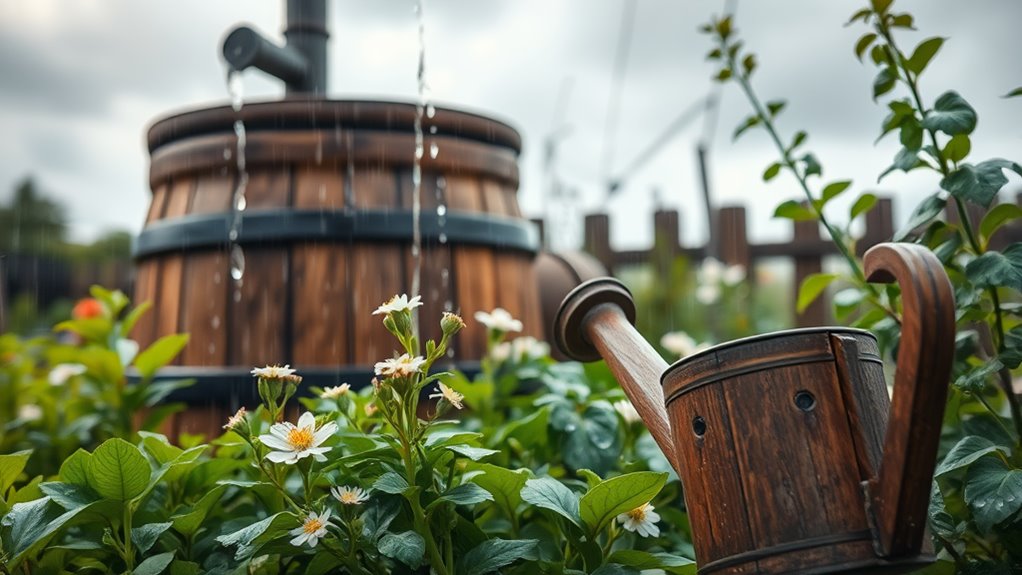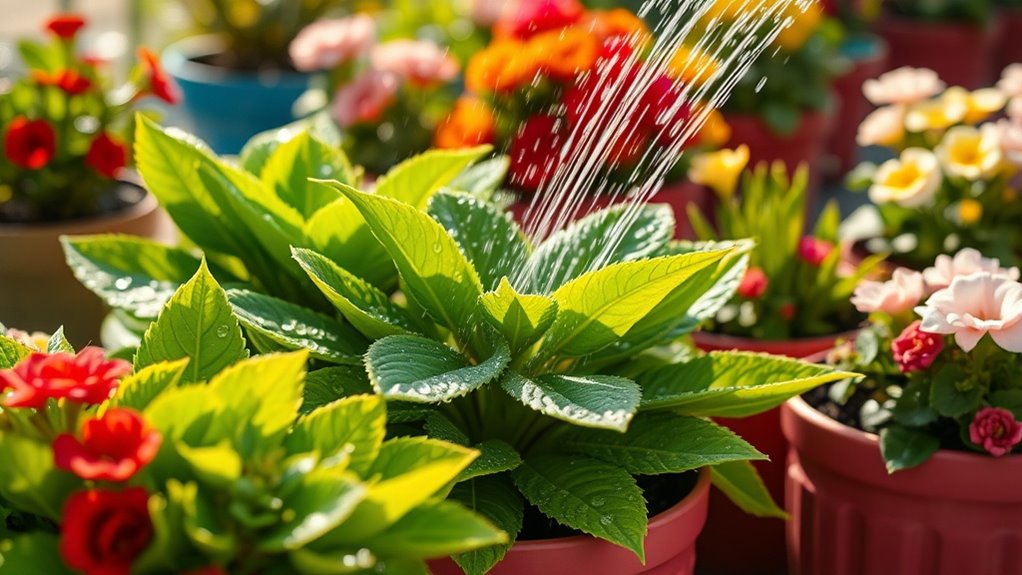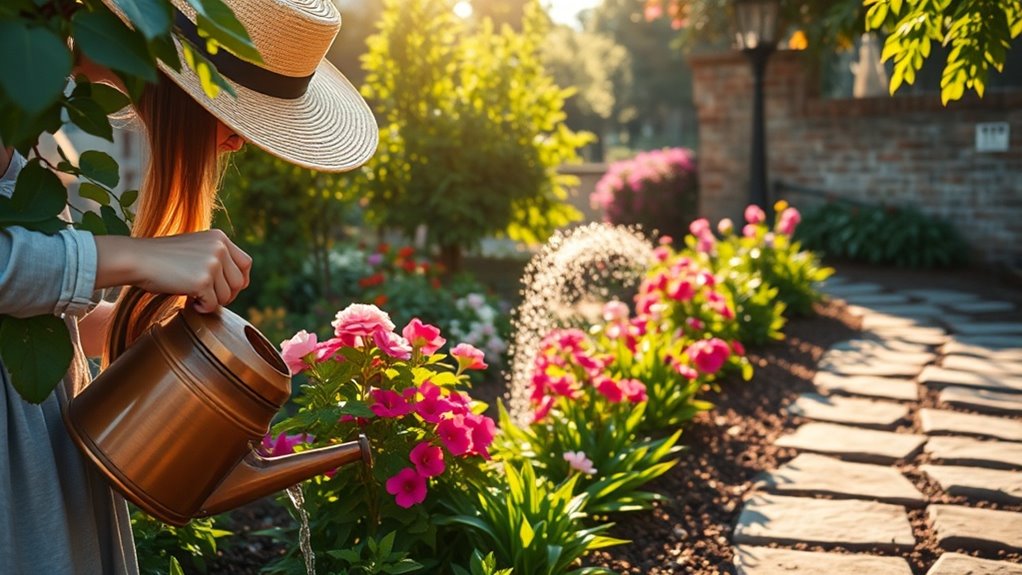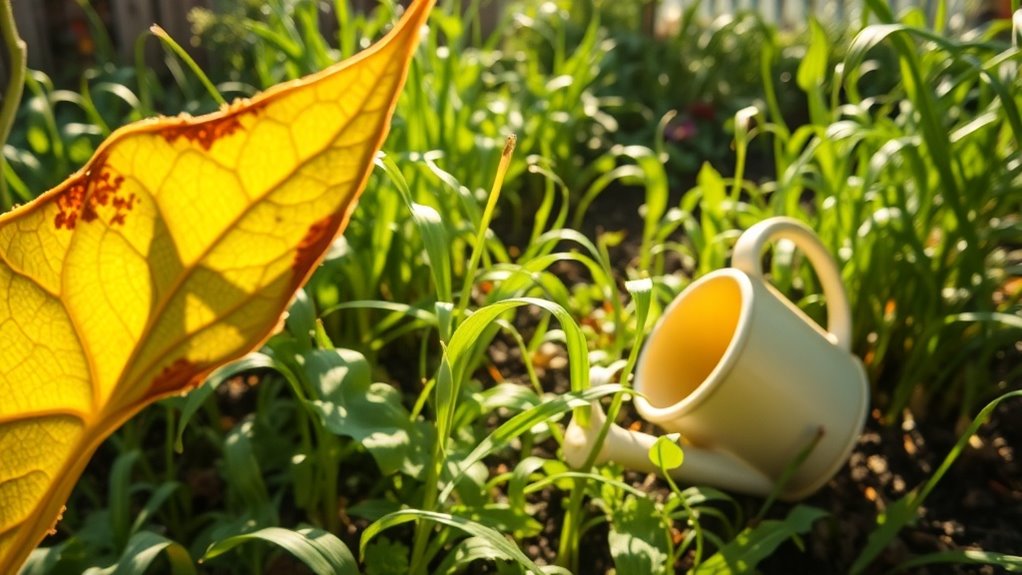How to Make the Most of Rainwater for Your Garden
Collecting rainwater can seem daunting, yet it’s surprisingly simple and rewarding. By harnessing this natural resource, you can significantly enhance your garden’s resilience while conserving water. Understanding effective collection methods and choosing the right plants are crucial steps. However, the real challenge lies in implementing best practices for maximizing your harvest. What strategies can you adopt to create a sustainable ecosystem that thrives even during dry spells?
Key Takeaways
- Install a rain barrel under downspouts to efficiently collect rainwater for garden use.
- Choose native plants with deep root systems to thrive in varied moisture conditions.
- Utilize a first-flush diverter to ensure collected rainwater is clean and free of debris.
- Implement drip irrigation to deliver water directly to plant roots, minimizing evaporation.
- Regularly maintain your rainwater system to prevent contamination and ensure optimal performance.
Effective Rainwater Collection Methods
How can you effectively collect rainwater for your garden?
Start by installing a rain barrel under your downspout; it’s one of the simplest rainwater garden tips.
Ensure the barrel has a mesh cover to keep debris out and a spigot for easy access.
You might also consider creating a rain garden to capture runoff, directing water from hard surfaces like driveways.
Use permeable pavers or gravel pathways to enhance absorption.
Lastly, check local regulations regarding rainwater harvesting; some areas have guidelines you should follow. Additionally, incorporating effective collection methods can significantly improve the efficiency of your rainwater usage.
Choosing the Right Plants for Rainwater Gardens
What factors should you consider when choosing plants for your rainwater garden?
Start by assessing your local climate and soil type, as these affect plant growth.
Opt for native species, as they’re adapted to your environment and require less maintenance.
Consider plants with deep root systems that can efficiently absorb excess rainwater, preventing runoff.
Look for those that thrive in wet conditions, like ferns and certain grasses, to maximize water usage.
Additionally, think about seasonal interest; incorporating a mix of perennials and annuals ensures your garden looks vibrant year-round.
Finally, ensure diversity to promote a balanced ecosystem. Incorporating seasonal garden tips can further enhance the effectiveness of your rainwater garden.
Best Practices for Utilizing Collected Rainwater
Utilizing collected rainwater effectively can significantly enhance your garden’s health while promoting sustainability. Start by ensuring your rainwater collection system is clean and free of contaminants. Use a first-flush diverter to keep debris out. Store rainwater in opaque, sealed barrels to prevent algae growth. When watering, apply rainwater in the early morning or late afternoon to minimize evaporation. Consider drip irrigation for efficiency, delivering moisture directly to plant roots. Regularly monitor your plants’ response to rainwater, adjusting your application based on their needs. Lastly, keep records of rainfall and usage to optimize your rainwater management strategy. Additionally, water-saving tips can further help you maintain a vibrant garden while conserving resources.
Creating a Sustainable Garden Ecosystem
Creating a sustainable garden ecosystem requires a thoughtful approach that harmonizes plants, soil, water, and wildlife.
By implementing certain strategies, you’ll enhance biodiversity and promote resilience in your garden.
Consider these key elements:
- Native plants: They require less water and attract local pollinators.
- Companion planting: Certain plants can naturally deter pests, reducing the need for chemicals. For example, planting basil with tomatoes can improve flavor and repel harmful insects.
- Mulching: This retains moisture, suppresses weeds, and enriches soil.
- Wildlife habitats: Incorporate birdhouses or insect hotels to support beneficial species.
Maintenance Tips for Rainwater Harvesting Systems
As you incorporate a rainwater harvesting system into your garden, maintaining it properly ensures that you maximize its efficiency and longevity.
Regularly inspect your gutters and downspouts for debris, as blockages can hinder flow.
Clean your rain barrel or storage tank every season to prevent algae growth and contamination.
Monitor the filtration system to ensure water quality; replace filters as needed.
Check for leaks in pipes and connections to avoid water loss.
Finally, consider winterizing your system in colder months to prevent freezing damage.
With these maintenance tips, you’ll keep your rainwater harvesting system running smoothly and effectively.





